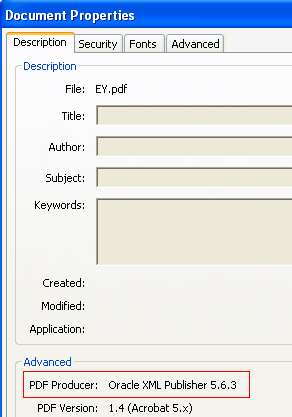Operations such as upgrades, patches and DDL changes can invalidate schema objects. Provided these changes don’t cause compilation failures the objects will be revalidated by on-demand automatic recompilation, but this can take an unacceptable time to complete, especially where complex dependencies are present. For this reason it makes sense to recompile invalid objects in advance of user calls. It also allows you to identify if any changes have broken your code base. This article presents several methods for recompiling invalid schema objects.
Identifying Invalid Objects
The Manual Approach
Custom Script
DBMS_UTILITY.compile_schema
UTL_RECOMP
utlrp.sql and utlprp.sql
Identifying Invalid Objects
The DBA_OBJECTS view can be used to identify invalid objects using the following query.
COLUMN object_name FORMAT A30
SELECT owner,
object_type,
object_name,
status
FROM dba_objects
WHERE status = ‘INVALID’
ORDER BY owner, object_type, object_name;
With this information you can decide which of the following recompilation methods is suitable for you.
The Manual Approach
For small numbers of objects you may decide that a manual recompilation is sufficient. The following example shows the compile syntax for several object types.
ALTER PACKAGE my_package COMPILE;
ALTER PACKAGE my_package COMPILE BODY;
ALTER PROCEDURE my_procedure COMPILE;
ALTER FUNCTION my_function COMPILE;
ALTER TRIGGER my_trigger COMPILE;
ALTER VIEW my_view COMPILE;
Notice that the package body is compiled in the same way as the package specification, with the addition of the word “BODY” at the end of the command.
An alternative approach is to use the DBMS_DDL package to perform the recompilations.
EXEC DBMS_DDL.alter_compile(‘PACKAGE’, ‘MY_SCHEMA’, ‘MY_PACKAGE’);
EXEC DBMS_DDL.alter_compile(‘PACKAGE BODY’, ‘MY_SCHEMA’, ‘MY_PACKAGE’);
EXEC DBMS_DDL.alter_compile(‘PROCEDURE’, ‘MY_SCHEMA’, ‘MY_PROCEDURE’);
EXEC DBMS_DDL.alter_compile(‘FUNCTION’, ‘MY_SCHEMA’, ‘MY_FUNCTION’);
EXEC DBMS_DDL.alter_compile(‘TRIGGER’, ‘MY_SCHEMA’, ‘MY_TRIGGER’);
This method is limited to PL/SQL objects, so it is not applicable for views.
Custom Script
In some situations you may have to compile many invalid objects in one go. One approach is to write a custom script to identify and compile the invalid objects. The following example identifies and recompiles invalid packages and package bodies.
SET SERVEROUTPUT ON SIZE 1000000
BEGIN
FOR cur_rec IN (SELECT owner,
object_name,
object_type,
DECODE(object_type, ‘PACKAGE’, 1,
‘PACKAGE BODY’, 2, 2) AS recompile_order
FROM dba_objects
WHERE object_type IN (‘PACKAGE’, ‘PACKAGE BODY’)
AND status != ‘VALID’
ORDER BY 4)
LOOP
BEGIN
IF cur_rec.object_type = ‘PACKAGE’ THEN
EXECUTE IMMEDIATE ‘ALTER ‘ || cur_rec.object_type ||
‘ “‘ || cur_rec.owner || ‘”.”‘ || cur_rec.object_name || ‘” COMPILE’;
ElSE
EXECUTE IMMEDIATE ‘ALTER PACKAGE “‘ || cur_rec.owner ||
‘”.”‘ || cur_rec.object_name || ‘” COMPILE BODY’;
END IF;
EXCEPTION
WHEN OTHERS THEN
DBMS_OUTPUT.put_line(cur_rec.object_type || ‘ : ‘ || cur_rec.owner ||
‘ : ‘ || cur_rec.object_name);
END;
END LOOP;
END;
/
This approach is fine if you have a specific task in mind, but be aware that you may end up compiling some objects multiple times depending on the order they are compiled in. It is probably a better idea to use one of the methods provided by Oracle since they take the code dependencies into account.
DBMS_UTILITY.compile_schema
The COMPILE_SCHEMA procedure in the DBMS_UTILITY package compiles all procedures, functions, packages, and triggers in the specified schema. The example below shows how it is called from SQL*Plus.
EXEC DBMS_UTILITY.compile_schema(schema => ‘SCOTT’);
UTL_RECOMP
The UTL_RECOMP package contains two procedures used to recompile invalid objects. As the names suggest, the RECOMP_SERIAL procedure recompiles all the invalid objects one at a time, while the RECOMP_PARALLEL procedure performs the same task in parallel using the specified number of threads. Their definitions are listed below.
PROCEDURE RECOMP_SERIAL(
schema IN VARCHAR2 DEFAULT NULL,
flags IN PLS_INTEGER DEFAULT 0);
PROCEDURE RECOMP_PARALLEL(
threads IN PLS_INTEGER DEFAULT NULL,
schema IN VARCHAR2 DEFAULT NULL,
flags IN PLS_INTEGER DEFAULT 0);
The usage notes for the parameters are listed below.
schema – The schema whose invalid objects are to be recompiled. If NULL all invalid objects in the database are recompiled.
threads – The number of threads used in a parallel operation. If NULL the value of the “job_queue_processes” parameter is used. Matching the number of available CPUs is generally a good starting point for this value.
flags – Used for internal diagnostics and testing only.
The following examples show how these procedures are used.
— Schema level.
EXEC UTL_RECOMP.recomp_serial(‘SCOTT’);
EXEC UTL_RECOMP.recomp_parallel(4, ‘SCOTT’);
— Database level.
EXEC UTL_RECOMP.recomp_serial();
EXEC UTL_RECOMP.recomp_parallel(4);
— Using job_queue_processes value.
EXEC UTL_RECOMP.recomp_parallel();
EXEC UTL_RECOMP.recomp_parallel(NULL, ‘SCOTT’);
There are a number of restrictions associated with the use of this package including:
Parallel execution is performed using the job queue. All existing jobs are marked as disabled until the operation is complete.
The package must be run from SQL*Plus as the SYS user, or another user with SYSDBA.
The package expects the STANDARD, DBMS_STANDARD, DBMS_JOB and DBMS_RANDOM to be present and valid.
Running DDL operations at the same time as this package may result in deadlocks.
utlrp.sql and utlprp.sql
The utlrp.sql and utlprp.sql scripts are provided by Oracle to recompile all invalid objects in the database. They are typically run after major database changes such as upgrades or patches. They are located in the $ORACLE_HOME/rdbms/admin directory and provide a wrapper on the UTL_RECOMP package. The utlrp.sql script simply calls the utlprp.sql script with a command line parameter of “0”. The utlprp.sql accepts a single integer parameter that indicates the level of parallelism as follows.
0 – The level of parallelism is derived based on the CPU_COUNT parameter.
1 – The recompilation is run serially, one object at a time.
N – The recompilation is run in parallel with “N” number of threads.
Both scripts must be run as the SYS user, or another user with SYSDBA, to work correctly.
For more information see:
DBMS_UTILITY.compile_schema
UTL_RECOMP









Recent Comments